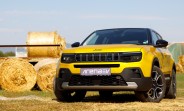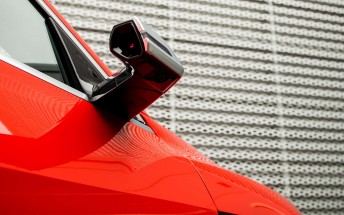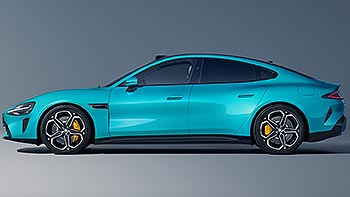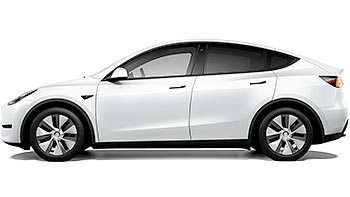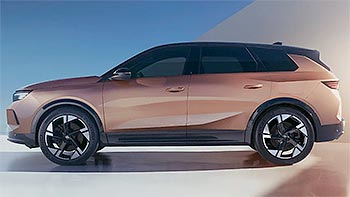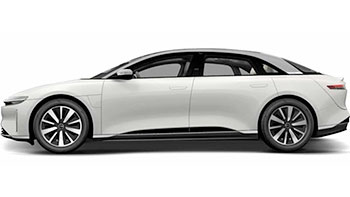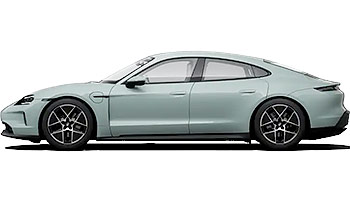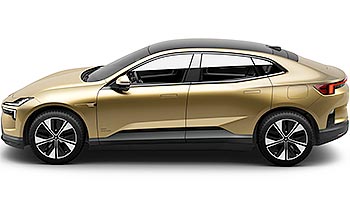Lucid Air tops new massive range test, VW ID.7 disappoints

Another major EV range arrived, this time courtesy of the guy from Motor 1. It involved 11 of the most popular EV models and showed how long they can go on a charge. The cars were driven at the same time alongside the "Autostrada del Grande Raccordo Anulare”"- the ring road surrounding the city of Rome, Italy, ensuring equal conditions for each vehicle.
Choosing this circuit is no accident - it is longer than the famous Nurburgring and simulates the conditions a normal driver stumbles upon on a daily drive. It has its traffic jams, accelerations, stops and every other aspect of a daily commute. The fact that all vehicles are moving together eliminates the risk of error and some drivers having a lighter commute than others.
The models tested are as follows: BMW i5, BYD Seal, Fiat 600e, Hyundai Ioniq 6, Jeep Avenger, Kia EV9, Lexus RZ, Lucid Air, Tesla Model 3, Toyota bZ4X and VW ID.7. All cars are charged at 100% and are driven until they have 5% left, so the Range achieved is expected to be shorter than promised, but actually should be closer to real life as nobody drives their EV until fully empty. The objective was to find how close the cars come to their official WLTP ratings.
Ambient temperatures aren’t mentioned in the video, but on one of the vehicles we notice a readout of 55°F, so we would say pretty close to optimal weather.
The Lucid Air GT was the runaway winner, in no small part thanks to its huge 112 kWh battery pack. But when it comes to being closest to the WLTP rating, the BMW i5 was the most impressive performer. While the VW ID.7 came 36% short from its stated range, the BMW i5 eDrive40 only experienced a 16% deviation.
In terms of consumption, the Tesla Model 3 shows just how efficient it can be with its 4.1 mi/kWh. The Hyundai Ioniq 6 comes to a close second place by consuming just 4 mi/kWh, while the rest of the contenders need a little bit more energy. The two worst-performing vehicles in the test by far are the Toyota bZ4X and the Lexus RZ, both Japanese models needing north of 2.5 mi/kWh and coming 40% of their WLTP ratings.
We've summed up the results in the table below so you can draw your own comparisons. Hit the comments section to let us know which cars were the biggest disappointments and which exceeded your expectations?
| Model | Range | WLTP rating | Consumption | Battery size |
|---|---|---|---|---|
| Lucid Air | 355 miles | 521 miles | 3.2 mi/kWh | 112 kWh |
| Tesla Model 3 | 309 miles | 391 miles | 4.1 mi/kWh | 75 kWh |
| BMW i5 | 304 miles | 362 miles | 3.7 mi/kWh | 81.2 kWh |
| Hyundai Ioniq 6 | 296 miles | 382 miles | 3.4 mi/kWh | 74 kWh |
| BYD Seal | 281 miles | 354 miles | 3.4 mi/kWh | 82.5 kWh |
| Kia EV9 | 278 miles | 350 miles | 3.4 mi/kWh | 96 kWh |
| Volkswagen ID.7 | 249 miles | 386 miles | 3.2 mi/kWh | 77 kWh |
| Fiat 600e | 175 miles | 254 miles | 3.2 mi/kWh | 51 kWh |
| Jeep Avenger | 171 miles | 249 miles | 2.9 mi/kWh | 51 kWh |
| Toyota bZ4X | 155 miles | 260 miles | 2.4 mi/kWh | 64 kWh |
| Lexus RZ | 151 miles | 252 miles | 2.4 mi/kWh | 64 kWh |
Related
Reader comments
Well ... Toyota bZ4X is probably the lightest EV SUV, but the efficiency is certainly not ideal.
- 01 Feb 2024
- ps1
- Anonymous
Incorrect WTLP for Tesla model 3, it got 18” wheels on which means the WTLP is 678km. (Which would then be a 27% range difference) They should have given more information regarding wheel size as it affects range.
- 01 Feb 2024
- d%H
